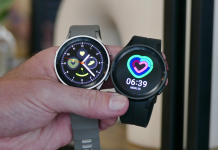Mobile advertising now saturates apps and websites generating over $300 billion annually. The precision promised by location-based targeting makes this disruptive medium irresistible. However, the personal data fueling such pinpoint sales pitches raises growing consent concerns around privacy violations, especially as ads blend our physical and digital worlds seamlessly.
In this guide, we’ll break down the data dependencies behind location-aware mobile advertising that enable such timely persuasion. You’ll understand modern techniques like geo-fencing that bridge online-to-offline buying journeys by syncing smartphones with public behaviors. Finally, we’ll explore consumer protections and industry reforms balancing privacy rights with innovations in an ad model far more pervasive than often realized.
How Location Awareness Targets Us
Before weighing privacy implications, understanding how mobile advertising pinpoints users based on location provides needed context behind data controversies. Sophisticated tracking across screens and spaces makes ads exceptionally relevant and persuasive by design.
App Location Access
Over 90% of apps request location permissions upfront during installation according to AppCensus – data most consumers freely provide. This allows perpetual access to GPS, Wi-Fi networks, nearby Bluetooth devices, and more providing real-time location monitoring of app users matched to unique ad IDs. Deduplication determines your identity across apps.
Location data then segments audiences for asset types like weather apps into granular zones – targeting Seattle transit riders with umbrellas or LA beachgoers with swimwear dynamically. Advertisers precisely push promotions by pinpointing geo-behavioral attributes.
Location Data Sharing
App makers further monetize privacy by selling location data to ad exchanges, often obscured deep in terms of service policies. For example Muslim Pro app with over 98 million users faced scrutiny for sharing detailed location data with brokers – now restricted but commonplace among ad-supported apps.
Weather Channel app even faced law enforcement requests for user data without consent. Rarely do users realize apps tracking their daily movements and routines sell such data. The location analytics market size is expected to reach $35+ billion by 2025 per MarketsandMarkets research.
Cross-Device Tracking
Sophisticated location tech also now ties together the whereabouts of your smartphone, tablet, and PC for unified digital profiles. Verizon’s Relevant Mobile Advertising bridges laptop ad clicks with mobile browsing for crisp attribution by location-matching IP, Wi-Fi, and GPS data points.
Google similarly links your places visited to serve ads aligned with laptop searches and activity. There’s no longer anonymity across your devices when used in personal spaces like homes as marketers achieve holistic views.
Old World Meets New World Targeting
Access to not just public but even in-home device usage fuels a strategy called geo-conquesting that bridges digital insights with physical storefronts. Let’s explore advertising capabilities as mobile consumption merges with traditional retail spaces.
Geo-Fences & Foot Traffic
Imagine walking into a clothing store, and noticing a dress in the window missing your size. Moments later an ad appears for that same retailer’s online store showing that product in your preferred size. This strategy called geo-fencing uses location boundaries to track consumer activity even on city streets.
GPS and Wi-Fi signals demarcate zones like retailers, malls, and landmarks. When your device enters the perimeter, data brokers log dwell time and repeat visits. Partner advertisers then retarget you with related offers via push notifications or in apps likely used in that location like transit or dining.
Without realizing it the physical stores you frequent have virtual tethers grabbing data once crossing digital property lines that manufacturers can buy. Mobile ads merge in-store shopping across e-commerce.
Determining Store Visits
Even more advanced, apps discern specific stores and departments shopped for targeted follow-up. Weather forecasting app WeatherBug used audio listening via phone mics to identify in-store music and determine retailers visited from sound fingerprints. Brands then retargeted users who recently visited locations playing that ambient audio.
Location verification company Shopwhitelist generates store visit confirmations by matching Wi-Fi router IDs and Bluetooth beacons to retail map databases when users walk near opt-in shops. Detailed store analytics then inform dynamic mobile ads.
In-Home Device Tracking
In perhaps the most alarming case uncovered by the New York Times in 2019, location data company Huq Industries alternatively matched mobile ad IDs to WiFi router IDs logged in households. This allowed connecting device IDs used at home to target ads across the linked smartphones of those residents.
So in effect, advertisers can retarget multiple household members’ shared devices and habits by identifying related ad IDs in the same residence through exposed router fingerprints. The investigation found privacy implications and disclosures severely lacking around these invasive practices. Few protections guard home devices being tapped by data brokers tracking usage for profit.
Protecting Mobile Privacy
Understandably the slippery nature of location-based data sharing, opaque disclosures, and blurring of in-person/online tracking raises alarms. However, protections exist so mobile advertising conveniences need not overwhelm personal boundaries entirely.
Limit Ad Tracking
Nearly all smartphones feature settings to limit ad tracking which when enabled tells apps not to share identifiers with data brokers or advertisers. This vastly limits the ability to create personalized profiles used ensuring you see relevant ads. However, performance and analytics still help routers without losing all privacy.
Additionally, Apple’s more stringent App Tracking Transparency requires every app to ask explicitly for user permission before enabling identifier tracking. This allows consumers granular control to block sharing on a per-app basis. Make sure to fully disable tracking in any app without justifiable cause if you prefer privacy.
MAC Address Randomization
Network hardware carries unique MAC addresses allowing routers and Bluetooth beacons to identify devices. To combat this, Apple and Android obscure MAC addresses from probing networks by auto-randomizing such IDs. This prevents Wi-Fi fingerprints used to link together household members. Check devices utilize MAC randomization to avoid tracking vulnerabilities.
VPN Encryption
Encrypt online activity on phones and laptops using trusted VPN apps that create private tunnels securing data flowing between devices and cell towers. VPN protection prevents snooping on browsing activity in transit by third parties. Configure home routers to connect devices through secure VPNs for an added layer of mobile privacy.
Regulatory Reform
Following alarming revelations around location tracking, both Google and Apple instituted app policy changes to better protect children and restrict background location monitoring to limited times. California’s digital privacy act also took effect in 2023 placing sharper restrictions on collecting and monetizing mobile user data that apply nationally. Further legislative protections are likely to emerge as reform conversations accelerate.
Closing Thoughts
At the start mobile advertising seems like an effective means of matching interested viewers with relevant services nearby. However, few realize the vast digital infrastructure tracking online and real-world activity continuously enables such pinpointed persuasion once stepping outside. Location permissions that seem harmless fuel a multi-billion dollar personalized advertising complex reliant on dismantling expectations of privacy in public and private spaces. Targeted comes at the cost of being watched.
But solutions balancing privacy with personalization offer lighter approaches less hunting user movements at large for profit. Privacy protections similarly check overreaches to collect without clear consent. When advanced reasonably and transparently, mobile advertising can connect interested consumers with helpful neighborhood offerings across increasingly ubiquitous smartphones. The applications prove compelling enough for most people to welcome if shielded properly.
As with any powerful innovation, associated risks demand ongoing scrutiny, governance, and consumer tools to avoid overexposure. Our world may accept cameras in every corner someday. But for now, smart policies, app developer responsibility, and user protections prevent mobile advertising from growing unrestrained at the public’s expense. The personal conveniences feel truly valuable when individuals retain control over how visible they stay on the grid finding them. Achieve this balance, and location-aware advertising platforms demonstrate precision promising businesses and privacy.








